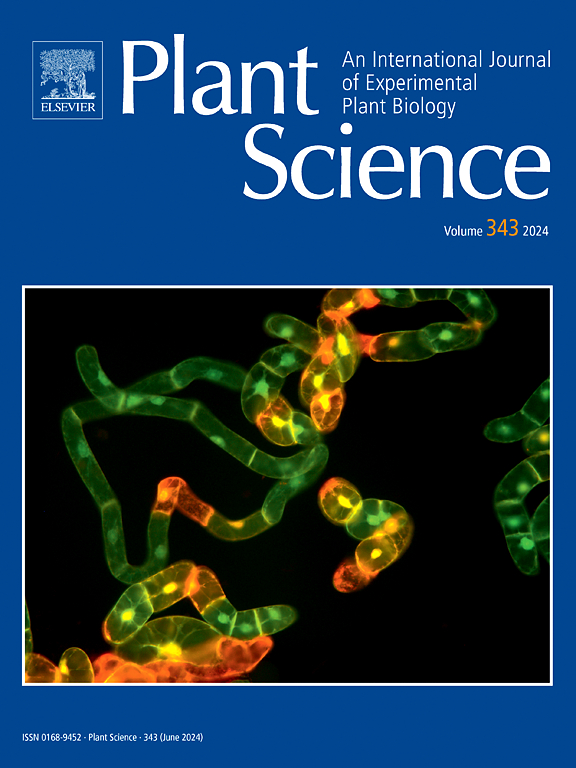Recent insights into anthocyanin biosynthesis, gene involvement, distribution regulation, and domestication process in rice (Oryza sativa L.)
IF 4.2
2区 生物学
Q2 BIOCHEMISTRY & MOLECULAR BIOLOGY
引用次数: 0
Abstract
Anthocyanins are water-soluble natural pigments found broadly in plants. As members of the flavonoid family, they are widely distributed in various tissues and organs, including roots, leaves, and flowers, responsible for purple, red, blue, and orange colors. Beyond pigmentation, anthocyanins play a role in plant propagation, stress response, defense mechanisms, and human health benefits. Anthocyanin biosynthesis involves a series of conserved enzymes encoded by structural genes regulated by various transcription factors. In rice, anthocyanin-mediated pigmentation serves as an important morphological marker for varietal identification and purification, a critical nutrient source, and a key trait in studying rice domestication. Anthocyanin biosynthesis in rice is regulated by a ternary conserved MBW transcriptional complexes comprising MYB transcription factors (TFs), basic-helix-loop-helix (bHLH) TFs, and WD40 repeat protein, which activate the expression of structure genes. Wild rice (Oryza rufipogon) commonly has purple hull, purple stigma, purple apiculus, purple leaf, and red pericarp due to the accumulations of anthocyanin or proanthocyanin. However, most cultivated rice (Oryza sativa) varieties lose the anthocyanin phenotypes due to the function variations of some regulators including OsC1, OsRb, and Rc and the structure gene OsDFR. Over the past decades, significant progress has been made in understanding the molecular and genetic mechanisms of anthocyanin biosynthesis. This review summarizes research progress in rice anthocyanin biosynthetic pathways, genes involvements, distribution regulations, and domestication processes. Furthermore, it discusses future prospects for anthocyanin biosynthesis research in rice, aiming to provide a theoretical foundation for future investigations and applications, and to assist in breeding new rice varieties with organ-targeted anthocyanin deposition.
关于水稻(Oryza sativa L.)花青素生物合成、基因参与、分布调控和驯化过程的最新见解。
花青素是一种水溶性天然色素,广泛存在于植物中。作为类黄酮家族的成员,花青素广泛分布于各种组织和器官中,包括根、叶和花,可呈现紫色、红色、蓝色和橙色。除了色素,花青素还在植物繁殖、应激反应、防御机制和人类健康方面发挥作用。花青素的生物合成涉及一系列由各种转录因子调控的结构基因编码的保守酶。在水稻中,花青素介导的色素沉着是品种鉴定和提纯的重要形态标记,也是重要的营养来源,还是研究水稻驯化的关键性状。水稻的花青素生物合成受三元保守的 MBW 转录复合物调控,该复合物由 MYB 转录因子 (TF)、碱性-螺旋-环-螺旋 (bHLH) TF 和 WD40 重复蛋白组成,可激活结构基因的表达。由于花青素或原花青素的积累,野生稻(Oryza rufipogon)通常具有紫色的稻壳、紫色的柱头、紫色的顶端、紫色的叶片和红色的果皮。然而,由于 OsC1、OsRb 和 Rc 等调控因子以及结构基因 OsDFR 的功能变异,大多数栽培稻(Oryza sativa)品种失去了花青素表型。过去几十年来,人们在了解花青素生物合成的分子和遗传机制方面取得了重大进展。本综述总结了水稻花青素生物合成途径、参与基因、分布调控和驯化过程的研究进展。此外,还讨论了水稻花青素生物合成研究的未来前景,旨在为未来的研究和应用提供理论基础,并帮助培育具有器官靶向花青素沉积的水稻新品种。
本文章由计算机程序翻译,如有差异,请以英文原文为准。
求助全文
约1分钟内获得全文
求助全文
来源期刊

Plant Science
生物-生化与分子生物学
CiteScore
9.10
自引率
1.90%
发文量
322
审稿时长
33 days
期刊介绍:
Plant Science will publish in the minimum of time, research manuscripts as well as commissioned reviews and commentaries recommended by its referees in all areas of experimental plant biology with emphasis in the broad areas of genomics, proteomics, biochemistry (including enzymology), physiology, cell biology, development, genetics, functional plant breeding, systems biology and the interaction of plants with the environment.
Manuscripts for full consideration should be written concisely and essentially as a final report. The main criterion for publication is that the manuscript must contain original and significant insights that lead to a better understanding of fundamental plant biology. Papers centering on plant cell culture should be of interest to a wide audience and methods employed result in a substantial improvement over existing established techniques and approaches. Methods papers are welcome only when the technique(s) described is novel or provides a major advancement of established protocols.
 求助内容:
求助内容: 应助结果提醒方式:
应助结果提醒方式:


